#Cartonnage
Text

A female mummy encased in a cartonnage
from tombs found at Taposiris Magna,
modern day Abusir, Egypt
Cartonnage is the term used in Egyptology and Papyrology naming a method used in funerary processes to produce cases, masks, or panels to help cover all/part of mummified or wrapped bodies
#art#archaeology#mummy#egypt#ancient art#ancient egypt#egyptology#ancient culture#ancient kemet#kemetic#kemet#egyptian art#papyrus#papyrology#cartonnage#mummification#mummified
511 notes
·
View notes
Text

La Sortie
#image#illustration#photomontage#portrait#photo art#digital illustration#artists on tumblr#photocomposition#collage#digital collage#cartonnage#cardboard#promener le chien#walking the dog#la sortie#going out#creative art
7 notes
·
View notes
Text




I was looking for a simple hardcover for my softcover notebooks and the market did not provide. So I taught myself cartonnage and made one. It's not perfect. There are glue stains and stuff, but it's what I wanted. I used tutorials by Colorway Arts on YouTube. Very happy with it.
4 notes
·
View notes
Text
Stunning cartonnage. So beautifully decorated.
0 notes
Text
{Tutoriel Scrapbooking} Un Mini Album dans un Coffret 1/2
Bonjour à tous,
Je suis ravie de vous retrouver ce mardi pour vous proposer un nouveau tutoriel Créatif afin de réaliser un mini album dans un coffret.
Cette semaine, le tutoriel sera consacré à la création du Coffret. C’est un écrin qui se tient bien, réalisé en cartonnette ce qui donne quelque chose de solide et qualitatif. La semaine prochaine, le tutoriel mettra l’accent sur le mini album…

View On WordPress
#atelier scrapbooking dunkerque#cartonnage#Clédesol créations#démonstratrice stampin up#démonstratrice stampin&039;up dunkerque#Les blablas de cledesol#scrap#tutoriel boite scrapbooking#tutoriel coffret scrapbooking#Tutoriel mini album#Tutoriel Scrap en français#tutoriel stampin&039;up#tutoriel vidéo
0 notes
Text
#youtube#scrapbooking#christmas#sapin de noël#cadeau de noël#cadeauxdenoel#noël#sapin#cartonnage#cardboard
1 note
·
View note
Text





Cartonnage Art Style
Midjourney Prompt: warehouse and logistics, video on stock video archive, in the style of realistic and hyper-detailed renderings, vray tracing, joel robison, dark amber and light amber, eerily realistic, meticulous design, realistic hyper-detailed rendering --no watermark --ar 7:4
#cartonnage#cartonnageart#artstyle#ancientart#handmadeart#imaginebuddy#freeprompts#freeimages#freephotos
0 notes
Photo
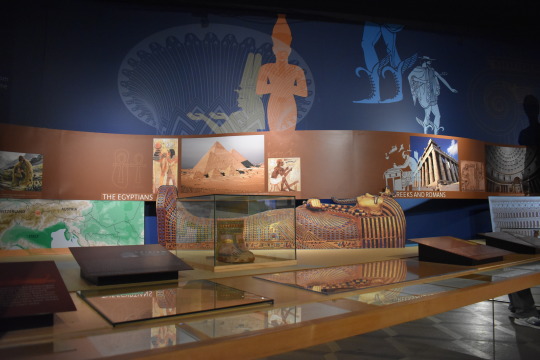

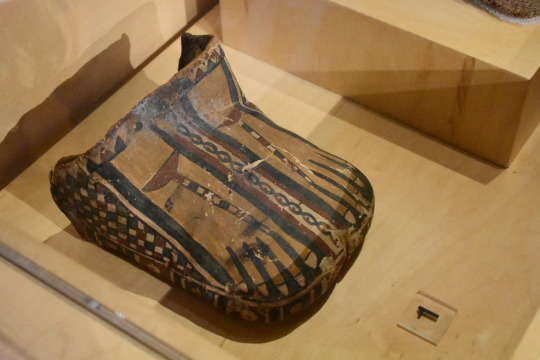
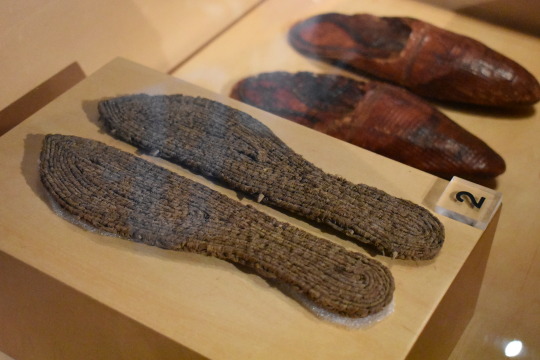

September 17, 2022 | Bata Shoe Museum
The Bata Show Museum is a museum of footwear and calceology (the study of footwear) in Toronto, Canada.
At the lowest level of the museum is its permanent exhibition, All About Shoes, which takes you through over 4,500 years of history. It begins with Ötzi’s shoes. Ötzi is the naturally mummified remains of a man who lived some time between 3350 and 3150 B.C., and the shoes he wore were made of bearskin and stuffed with hay. The museum had a recreation of these shoes.
Next in this exhibition is about the Ancient Egyptians and their shoes. A label reads:
Egypt’s hot climate meant that sandals were the most common type of footwear. Typically, they were made from leather, straw, or plant leaves, but privileged individuals wore sandals constructed out of precious metals.
The second photograph is of a cartonnage (Ancient Egyptian, 300 B.C.E. to 1 C.E.). Cartonnage is a type of material used in ancient Egyptian funeral preparation, and it is made of layers of linen or papyrus covered with plaster. In this specific piece, “the underside depicts conquered enemies painted on the soles of the sandals.”
The numbered footwear are described as such:
Cartonnage made of linen and gesso and depicting sandaled feet for the mummy (Ancient Egyptian, 1–200 C.E.)
Pair of sandals missing its original thong (Ancient Egyptian, 1500–1200 B.C.E.)
Coptic mules from Upper Egypt made from red leather and embossed with geometric designs (Coptic, 300–500 C.E.)
#l'egypte est partout#bata shoe museum#museum#toronto#egypt#ancient egypt#canada#all about shoes#sandals#shoes#footwear#Cartonnage#mules#egypt in life#egypt in fashion
1 note
·
View note
Photo
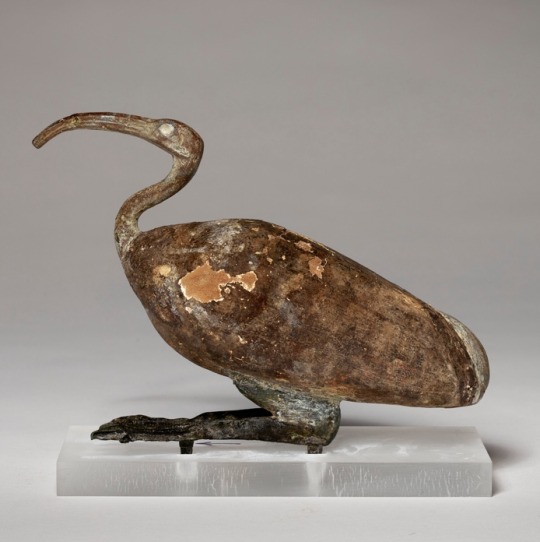

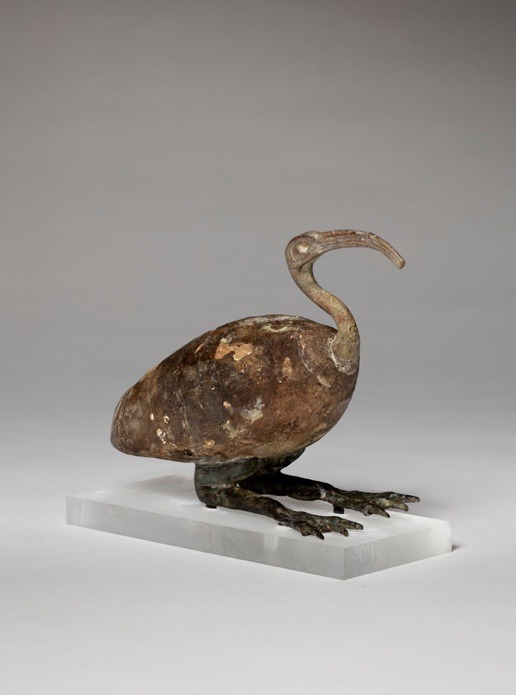
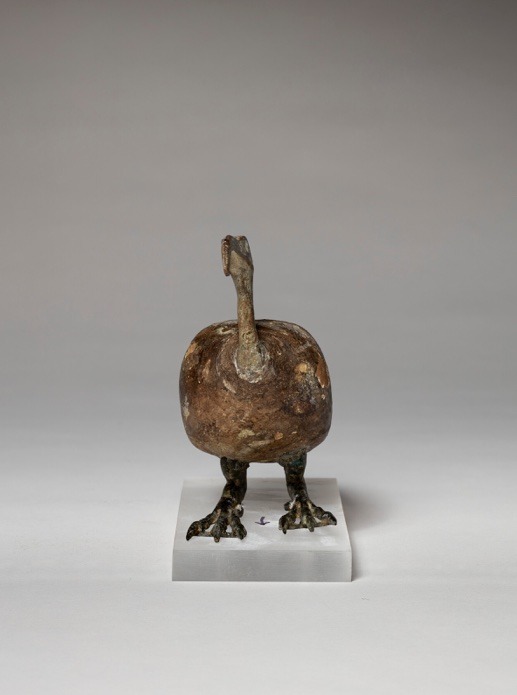
AN EGYPTIAN CARTONNAGE, WOOD AND BRONZE IBIS
LATE PERIOD TO PTOLEMAIC PERIOD, 664-30 B.C.
7 3⁄8 in. (18.7 cm.) long
The ibis was sacred to the god Thoth. This example was likely made as a dedicatory gift at one of the god’s temples. The body, constructed of wood, would have been covered with cartonnage and painted or gilded.
#AN EGYPTIAN CARTONNAGE WOOD AND BRONZE IBIS#LATE PERIOD TO PTOLEMAIC PERIOD 664-30 B.C.#bronze#bronze sculpture#ancient bronze#ancient artifacts#archeology#archeolgst#history#history news#ancient history#ancient culture#ancient civilizations#ancient egypt#egyptian history#egyptian art
83 notes
·
View notes
Photo
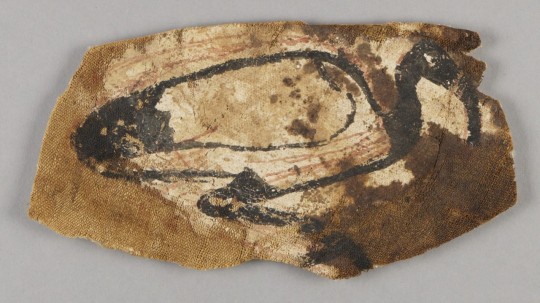
Fragment of mummy cartonnage / Ptolemaic or early Romano-Egyptian / Textile
23 notes
·
View notes
Text



Today is 18th of September.
Today is National Cheeseburger Day, International Equal Pay Day, National Cartonnage Day.
0 notes
Text

Mask of Thuya
New Kingdom, late 18th Dynasty, ca. 1391-1353 BC.
Tomb of Yuya and Thuya (KV46), Valley of the Kings, Thebes.
Now in the Egyptian Museum, Cairo. JE 95254
The mummy mask of Tjuyu or Thuya is made of cartonnage covered with a thin layer of gold foil. When found it was completely covered with the remains of its linen shroud removed by the restorer. A few fragments of the shroud, now blackened with age, still adhere to the wig and part of the pectoral.
Thuya is depicted with idealized features. Her face is a squarish oval in shape and is framed by a three-part wig that leaves the ears exposed. The headdress is held in place by a diadem that can be seen below the shroud decorated with floral motifs, a lotus flower is placed above the forehead.
Read more
198 notes
·
View notes
Text



Very sloppy prototype (made with the cheapest materials and complete with glue stains) of a cahier hard slip cover. Works exactly as I wanted. Will buy better materials and make it good (I'll make a more structured spine too)
0 notes
Text
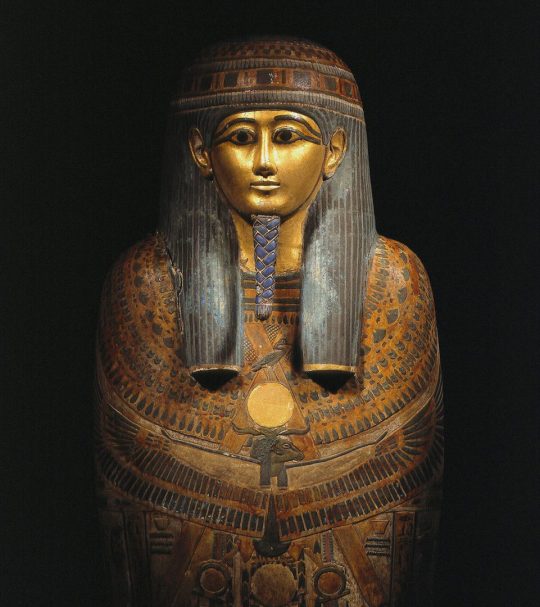
Cartonnage covering for the priest Paneksy, Egypt, circa 900 BC
from The Rijksmuseum
256 notes
·
View notes
Photo
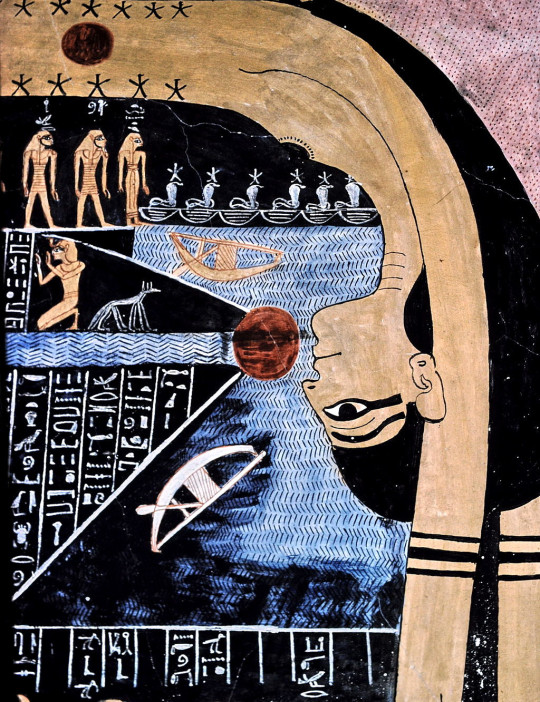
Legends and myths about trees
Legendary tree deities (14)
Nut – Goddess of the sky & tree in Egyptian mythology
Nut the sky goddess was the most common tree goddess.
A goddess, part woman, part tree on a 21st Dynasty cartonnage. This is a tree goddess. Usually the goddess is Nut or more rarely Hathor or Isis. The tree was usually the sycamore fig (though the word for sycamore, nht, was used as the general word for ‘tree’). Often the goddess is showing pouring out refreshing liquid into the hands of the deceased while their ba (in the form of a bird with human head) stands close by or flutters in the branches.
In ancient Egyptian mythology, Nut (pronounced “newt”) is the goddess of the sky and heavens. She was the daughter of Shu, god of the air, and his wife Tefnut, goddess of moisture and rainfall. Her brother and husband is Geb, god of the earth. It was believed that Geb's laughter created earthquakes and that he allowed crops to grow. When they were embracing, their father Shu forcibly pulled them apart and heaven and earth were separated. This myth is one of the most famous in Egyptian mythology, and the image of Shu standing over the lying Geb and supporting Nut is well known.
Nut became pregnant with five children and Ra, god of the sun, forbade her from giving birth during the official calendar year. The ancient Egyptian calendar consisted of only 360 days in a year, had 12 months of 30 days and 24 hours within those days. She asked for help from Thoth, god of the moon, scriptures, sciences, messenger and recorder of the deities, master of knowledge, and patron of scribes. It has been said that Thoth was secretly in love with Nut and didn’t hesitate when she asked for his assistance.
Thoth was able to play dice with the moon and granted Nut five extra calendar days in order for her to give birth to the five children: Osiris (god of the underworld), Isis (goddess of healing, magic), Seth (god of war, storms), Nephthys (goddess of the night, mourning), and Horus the Elder, the falcon-headed god. These children were not welcomed and were considered intruders in the divine community.

木にまつわる伝説・神話
伝説の樹木の神々 (14)
ヌート〜 エジプト神話に登場する天空と木の女神
天空の女神ヌートは、最も一般的な木の女神であった。
第21王朝のカルトナージュに描かれた、女神のような、女性のような、樹木のような。これは木の女神である。女神は通常ヌート、まれにハトホルやイシスである。木は通常、スズカケノキ (エジプトイチジク) である (ただし、スズカケノキの単語 ‘nht’ は「木」の一般的な単語として使用されていた)。多くの場合、女神が故人の手に清涼な液体を注ぎ、その傍らにバー (人間の頭を持つ鳥) が立っているか、枝の中で羽ばたいている様子が描かれている。
古代エジプト神話によると、ヌートは、空と天の女神である。大気の神シュウと、その妻で湿気と降雨の女神テフヌートの娘である。彼女の兄であり夫は、大地の神であるゲブである。ゲブの笑い声が地震を起こし、作物を成長させると信じられていた。二人で抱き合っているところを、父親のシューが無理矢理引き離し、天と地とが分かれたとされる。この神話はエジプト神話の中でも特に有名で、横たわったゲブの上にシューが立ち、ヌートを支える図像はよく知られている。
ヌートは5人の子供を身ごもったが、太陽神のラーは公式暦年の間に出産することを禁じた。古代エジプトの暦は1年360日で、30日の12ヶ月と1日24時間から成っていた。彼女は、月、聖典、科学の神であり、神々の使者であり記録者であり、知識の達人であり、書記者の守護神であるトトに助けを求めた。トトはヌートに密かに恋心を抱いており、彼女に助けを求められたとき、躊躇しなかったと言われている。
トトは月とサイコロで勝負し、ヌートに5人の子供を産ませるために5日余分に暦日を与えることができた。その子供達がオシリス (冥界の神)、イシス (癒しと魔術の女神)、セス (戦争、嵐の神)、ネフティス (夜、哀悼の女神)、そして鷹の首をもつ長老ホルスである。しかし、これらの子どもたちは歓迎されず、神々の共同体への侵入者とみなされた。
#trees#tree legend#tree myth#legend#mythology#egyptian mythology#nut#geb#sycamore tree#sycamore fig#nature#art
198 notes
·
View notes
Photo
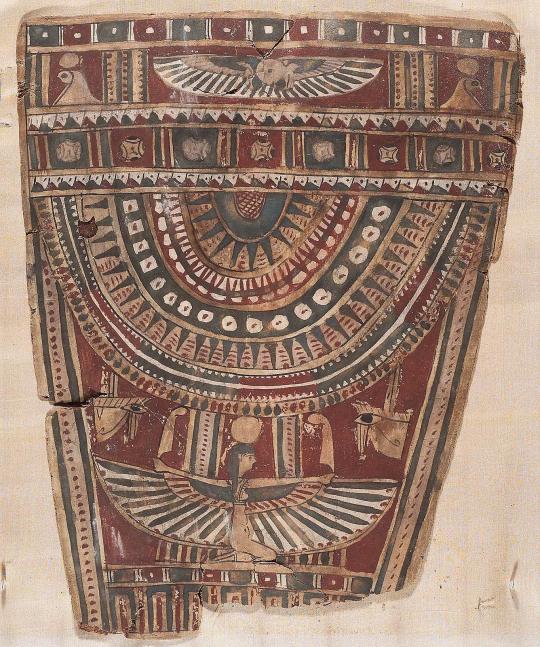
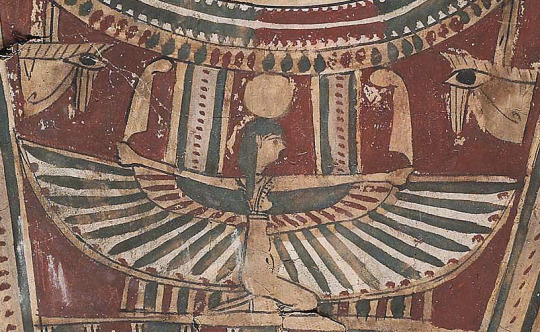
Fragment of a cartonnage mummy cover
Egyptian Hellenistic Period (Ptolemaic Dynasty) 3rd–2nd century B.C.
mfa boston
112 notes
·
View notes